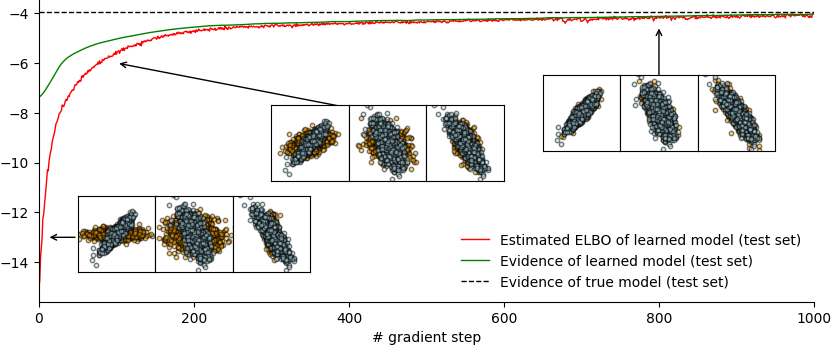Training Latent Variable Models with Auto-encoding Variational Bayes: A Tutorial
Auto-encoding Variational Bayes (AEVB) is a powerful and general algorithm for fitting latent variable models (a promising direction for unsupervised learning), and is well-known for training the Variational Auto-Encoder (VAE). In this tutorial, we focus on motivating AEVB from the classic Expectation Maximization (EM) algorithm, as opposed to from deterministic auto-encoders. Though natural and somewhat self-evident, the connection between EM and AEVB is not emphasized in the recent deep learning literature, and we believe that emphasizing this connection can improve the community's understanding of AEVB. In particular, we find it especially helpful to view (1) optimizing the evidence lower bound (ELBO) with respect to inference parameters as approximate E-step and (2) optimizing ELBO with respect to generative parameters as approximate M-step; doing both simultaneously as in AEVB is then simply tightening and pushing up ELBO at the same time. We discuss how approximate E-step can be interpreted as performing variational inference. Important concepts such as amortization and the reparametrization trick are discussed in great detail. Finally, we derive from scratch the AEVB training procedures of a non-deep and several deep latent variable models, including VAE, Conditional VAE, Gaussian Mixture VAE and Variational RNN. It is our hope that readers would recognize AEVB as a general algorithm that can be used to fit a wide range of latent variable models (not just VAE), and apply AEVB to such models that arise in their own fields of research. PyTorch code for all included models are publicly available.
PDF Abstract

